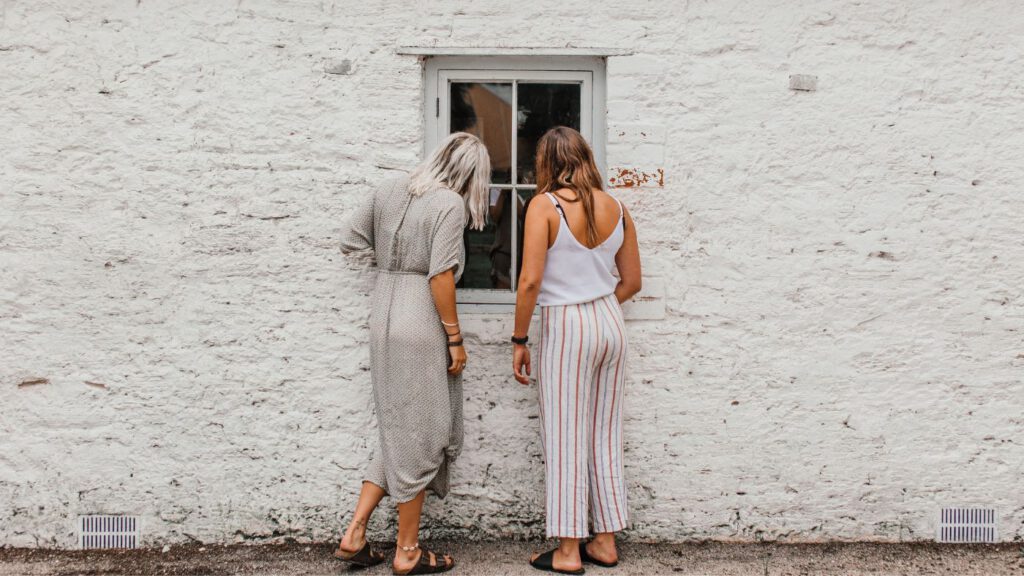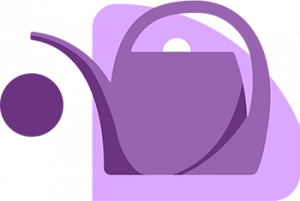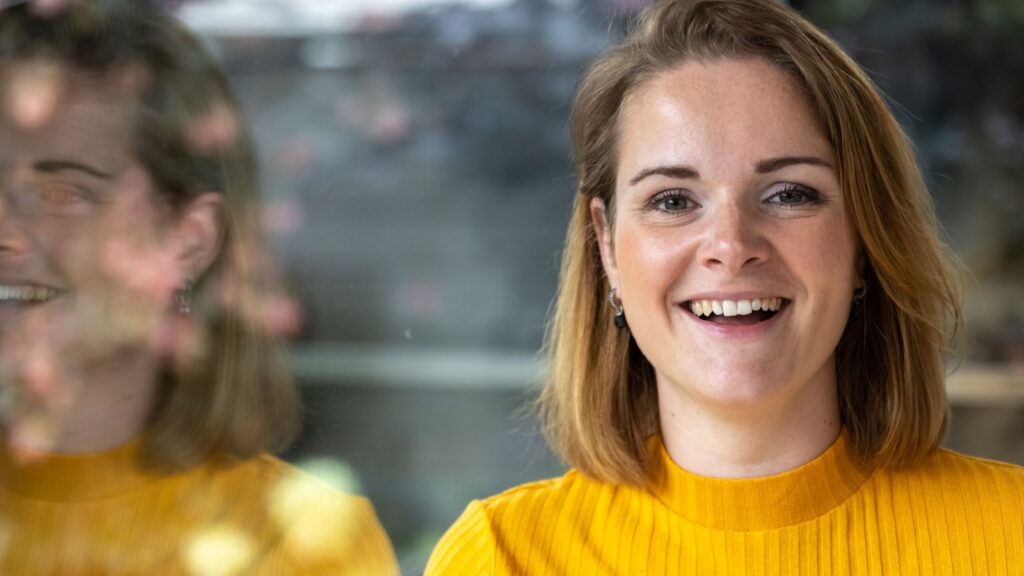Tiny house vacation rental as an investment: here’s how it works

A Tiny house, who doesn’t dream of it? A romantic spot in the middle of a beautiful forest, to sit in front of the fireplace after a long winter walk, with chocolate milk (afijn: with a glass of wine) looking out over nature. But you can also purchase a tiny house vacation home as an investment. So did Nikkie and Marc. In this article, Nikkie takes you through the process from dream to reality: read all about a tiny house vacation rental as an investment and how Nikkie and Marc developed their first tiny house called NOYR.
Tiny house vacation rental as an investment: where do you start?
Actually, with us it happened very impulsively. I was scrolling through Instagram one day and a sponsored post came along of a modern tiny house vacation rental for sale as an investment project. I myself am a big fan of beautiful interiors and homes as well as travel, so I clicked on. Pretty unserious at first, but I became more and more fascinated the more I read about the cottage. I showed it to my friend Marc and he too was thrilled. We have a business together so buying a house in Utrecht – where we live – is not yet an option. However, we would still like to create some more (semi-)passive revenue streams. I am then one of those types who goes on reading endlessly about it, downloading brochures and Googling. And then you also soon discover that there is quite a lot involved. Herewith I share the 6 steps we took before purchasing a tiny house vacation home as an investment.
Step 1 : go visit somewhere
Upon downloading the detailed brochure of the tiny house from the advertisement in question, we immediately had a call from the sales department the next day. Yes, this company did have its commercial lane in order. And so a week later, we found ourselves touring some tiny houses at the height of corona time. At a vacation park where, due to the serious situation at the time, there was not a tourist in sight. Super excited we were about the cottages, but the park itself was too massive and commercial for us. In addition, we felt that the associated (including financial) obligations with this park were too risky. But this viewing was really incredibly valuable to us. In addition to all the information we had already found for ourselves, we learned so much about, for example, all the costs and responsibilities involved in buying a vacation home.
Step 2: Consider what type of object you want
After you have had a viewing and have already read up on yourself, you can get a better idea of the type of property you would like. I am a huge fan of unique vacation spots so investing in a “standard” chalet was never an issue for us. I simply would not consider that a really “fun” investment. This immediately eliminates many possible locations. Many campgrounds and parks have requirements for the appearance of your vacation rental and, for example, only work with certain suppliers. Generally, these are massive providers of vacation rentals or mobile homes where you can pick your design from a booklet. Personally, we often found these designs too corny and not unique enough. We really wanted to stick with the tiny house idea. Then there is the choice of buying an existing property or building or having something built yourself. We first looked into existing properties, but it quickly became apparent that the existing properties in the Netherlands did not meet our needs. Therefore, we then started looking for single lots.
Step 3: Consider the area in which you would like a cottage
We also knew we wanted a cottage in a natural setting. The ultimate dream was a detached cottage somewhere in the woods, but that is very difficult in the Netherlands. After all, you have to deal with zoning laws that make this virtually impossible. There are some openings here and there with some municipalities, but for that you have to be veeeeeeeery patient and dare to invest in possible zoning changes and/or permit applications. Too costly and risky for us. In addition, keep in mind that in such locations there is often no connection to gas, water and electricity. So you are then tied to (more expensive) off-the-grid houses. We ended up finding a very nice lot at a small forest campground on the north side of the Veluwe. So we have the convenience of the amenities that the campground already has, but the cottage is still in a natural setting.
Step 4: ask yourself the right questions
In addition to the location and surroundings, there are a number of things to think about. So ask yourself at least the following questions during the process of your search:
What is your intended audience?
Think about who you would most like to rent your property to. What type of accommodation and vacation are they looking for and in what area? Keep this constantly in mind during your search and throughout the process. After all, the ultimate goal is to rent out your cottage as much as possible, and it doesn’t have to be your own perfect cottage.
Do you want to rent yourself or do you want to have this done?
Renting out a vacation home is very different from renting out a regular home. You have to deal with a lot more changeovers, so you will have to make sure the property is rented out. That involves more than just posting on platforms like Booking.com or Airbnb. So consider whether you enjoy doing this yourself (making the investment a little less passive) or whether you would like to outsource it. The latter is possible at many parks, but it comes with a commission. We made a conscious decision to rent it out ourselves. So for us it was important that we could also take advantage of that and not still have to pay high commission fees when renting ourselves out.
Do you want to rent or buy the land?
Depending on what type of property you want, you might want to rent or buy the land. In general, buying is more favorable in many cases as an investment. In many campsites, however, this is not possible, and of course it also requires a greater upfront investment. Therefore, make sure that you are not already paying sky-high annual costs on any plot rental. Also, inform well what is and is not allowed on the lot. We coordinated the design of our cottage extensively with the campground owners.
How do you arrange things like cleaning, checking in et cetera?
As mentioned, when renting out a vacation rental, you have to deal with a lot of changes. Checking in and out, cleaning and washing must be done every time. Is this something you would want to do yourself or would you want to outsource? At most campgrounds or parks, for example, they work with a cleaning company and you can outsource this. There are, of course, costs involved that you need to consider.
Do you have sufficient buffer of your own or is there the possibility of a loan?
Buying a vacation home is not an overnight expense. Because most vacation homes are portable and the land is usually not owned by you, you generally cannot get a mortgage on them (brick vacation homes may be exceptions). So you will need to have sufficient savings to make such an investment. If you already own your own (brick-and-mortar) home, there are also options for a loan on the excess value of your mortgage. You then use your own home as collateral. Finally, personal loans are also available. But that is also subject to a higher interest rate.
Step 5: talk to current homeowners
One tip I can give everyone: go talk to current vacation home owners! You learn so much from that. When you read the brochures and talk to the major parks, you obviously get to hear the great stories. But is it really such a good investment? How much time does it take and what will you all have to deal with? At the time, I boldly messaged some of the owners via Instagram and Airbnb. And still I am in weekly contact with some of them. Super valuable! Also, please especially let me know if there is anyone I can help again: will be happy to do so.
Step 6: the financial side of a vacation home
And then, of course, perhaps most importantly: the financial side of such an investment. After all, what does such a cottage really cost and what does it provide? Fortunately, Marc is an accountant and has created elaborate Excel sheets for this. I briefly list the most important aspects for you.
Cost side
Of course, you can make the cost side as crazy as you want. But for a new chalet for 2-4 people you have to reckon with around €30,000 – €100,000 including VAT (and you can often claim it back, I’ll come back to that later!). For €30,000 you then have a fairly standard property, and for €100,000 you can put up a fairly unique tiny house. There are actually 2 types of builders: the chalet builders and the tiny house builders. Tiny houses are very hip at the moment and, in particular, are also used for living in. With the latter group, then, you are in a much higher price range (from €60,000). Our tip: create a Pinterest board with what appeals to you and use that to visit a chalet builder who supports customization. This is how we finally ended up at Duke Recreation Construction. Young entrepreneurs who can completely customize our own design. For a chalet price 😉 In addition, take into account costs of the plot, maintenance, possible commission, insurance et cetera. And don’t forget depreciation! After all, it is a cottage that – in most cases – does not last for centuries like a regular home.
Revenue
For your expected returns, you will have to make an estimate. There are 2 aspects important here: your expected revenue per night and the occupancy rate. And that varies quite a bit throughout the year. In the winter, your revenue per night and occupancy rates will be lower than in the peak season. To get a good estimate of this, take a look at what other cottages are asking, and ask around with current owners what occupancy rates they are achieving. Keep in mind that if you are going to work with rental platforms such as Airbnb that there is a commission associated with that as well. In addition, you will probably have to pay cleaning fees and tourist tax per booking. With large parks aimed at investors, they often assume a 3-7% return. If you plan to figure things out yourself and invest time (structurally) in them, we expect that the returns can certainly reach well over 10%.
Taxes
Do you have the vacation home as an investment for rental (and therefore not primarily for private purposes)? Then you can register as an entrepreneur for VAT returns. That means you have to pay 9% VAT on the rental, but on the other hand, you may also reclaim 21% on the purchase of vacation home. And so that’s quite a sum! And what’s extra nice: generally, you are not an income tax entrepreneur. This means that the value of the vacation home is included as an investment (Box 3) and so you pay relatively little tax on it. Be aware that if you start investing in multiple cottages or spend a lot of time renting out your property, the IRS may also start seeing you as an income tax entrepreneur.
Update 2023: Paying relatively little tax is true now, but in the next few years they are moving toward making you pay taxes on the actual return instead of a notional return. And so that also means that if you make a high return on your vacation home, you will also have to pay more tax on it in the future.
Enthusiastic!
We do, mamma mia! Here on the Elfin editorial staff, we have secretly been dreaming for ages of a small wooden house in the woods, where we wake up amidst whistling birds, chickens laying eggs, fruit trees and a vegetable garden. Sigh.





